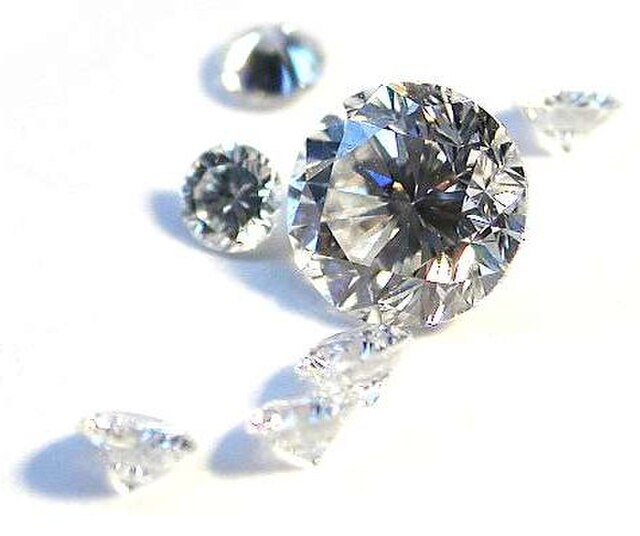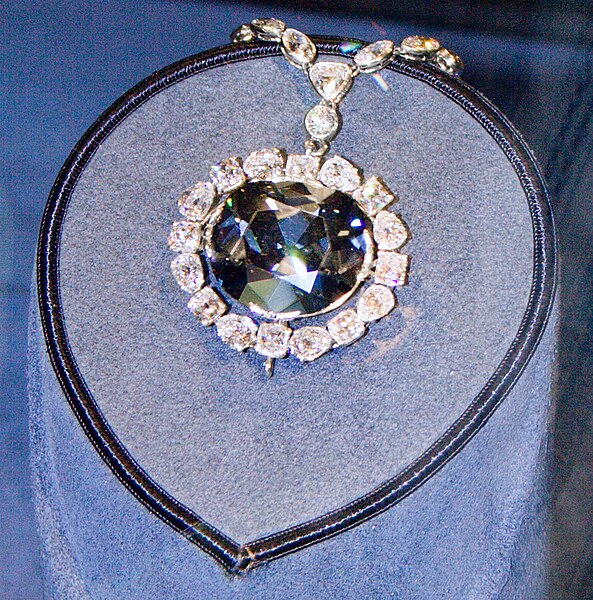A chemically pure and structurally perfect diamond is perfectly transparent with no hue, or color. However, in reality almost no gem-sized natural diamonds are absolutely perfect. The color of a diamond may be affected by chemical impurities and/or structural defects in the crystal lattice. Depending on the hue and intensity of a diamond's coloration, a diamond's color can either detract from or enhance its value. For example, most white diamonds are discounted in price when more yellow hue is detectable, while intense pink diamonds or blue diamonds can be dramatically more valuable. Of all colored diamonds, red diamonds are the rarest. The Aurora Pyramid of Hope displays a spectacular array of naturally colored diamonds, including red diamonds.
The Hope Diamond, 45.52 carats (9.104 g), dark grayish-blue
Jewellers diamonds in groups of similar colors.[clarification needed] These from the National Museum of Natural History are a medium brown color.
The 296 gems of the Aurora Pyramid of Hope as exhibited in the Natural History Museum in London under natural light.
Diamond is a gemstone formed by cutting a raw diamond. Diamonds are one of the best-known and most sought-after gems, and they have been used as decorative items since ancient times.
Diamonds in modern brilliant cut.
The Hope Diamond. Its deep blue coloration is caused by trace amounts of boron in the diamond.
Fleetwood Rawstone's "Red Cap Party" of prospectors on Colesberg Kopje
The Big Hole.


![Jewellers diamonds in groups of similar colors.[clarification needed] These from the National Museum of Natural History are a medium brown color.](https://upload.wikimedia.org/wikipedia/commons/thumb/1/19/National_Museum_of_Natural_History_Gold_Colored_Diamonds.JPG/640px-National_Museum_of_Natural_History_Gold_Colored_Diamonds.JPG)




